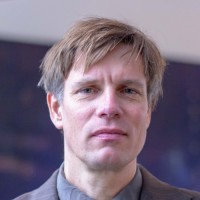Objectives
- Develop an airborne wind energy resource analysis tool and forecasting model.
- Develop AWE system performance models for full integration with the integral model of NEON.
- Optimize the operation of AWE systems arranged in wind parks, to minimize levelized cost of energy (LCOE) and profit of energy (LPOE) while ensuring reliable and safe operation.
- Optimize the joint operation of wind and solar parks for the energy scenarios proposed in NEON.
- Develop design methodologies for performance-critical (e.g. flying) system components.
- Assess environmental footprint (acoustic emissions, effect on flora and fauna, water) and public acceptance of AWE systems.
- Define regulatory framework for commercial operation of AWE systems for on- and offshore.
Activities
- Combine AWE resource assessment tool and system performance model to calculate annual energy production (AEP) for specific locations on- and offshore. Validate with existing measurement data.
- Explore potential of dynamically varying operational parameters to further optimize AEP.
- Refine park level aspects such as phase shifted operation, aerodynamic interaction, maximizing packing density, availability and impact of turbulence and extreme weather.
- Analyze the effect of large-scale AWE generation on the electricity landscape, particularly also how this breakthrough technology can be used to complement conventional wind and solar energy.
- Create design methodology for for flexible membrane wings, including bridle line system, based on coupled flight dynamic, aerodynamic and structural dynamic model of the wing.
- Develop a supply chain for major cost parts and their production, in particular for the flying components. This includes smart choices for durable materials and advanced manufacturing.
Expected output
- At least 5 journal papers describing the advancement of AWE for large-scale offshore energy generation, some co-authored with other WPs (M12x1,24×2,36×2,48×2).
- At least 5 journal papers describing the advancement of small-scale onshore energy generation, some co-authored with other WPs (M12x1,24×2,36×2,48×2).
- At least 3 journal papers describing the environmental footprint of AWE and public acceptance, some co-authored with other WPs (M12x1,24×1,36×1,48×1).
- At least 14 conference papers, some co-authored with other WPs (M12x2,24×6,36×6).
- Toolchain from wind resource assessment to annual energy output with focus on the Netherlands.
- At least 3 PhDs will spend more than 3 months abroad with knowledge institutions.
- At least 20 mentions of NEON scenarios in national newspapers or on television.
